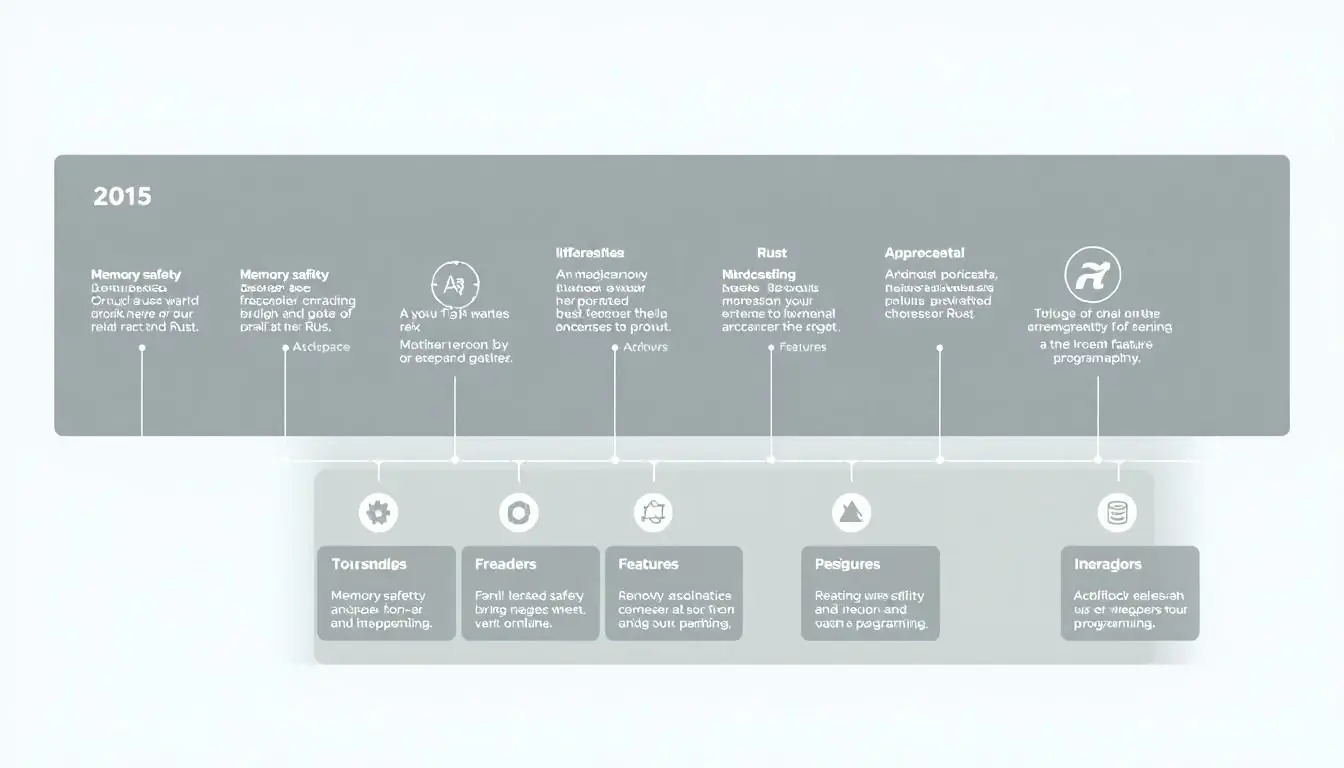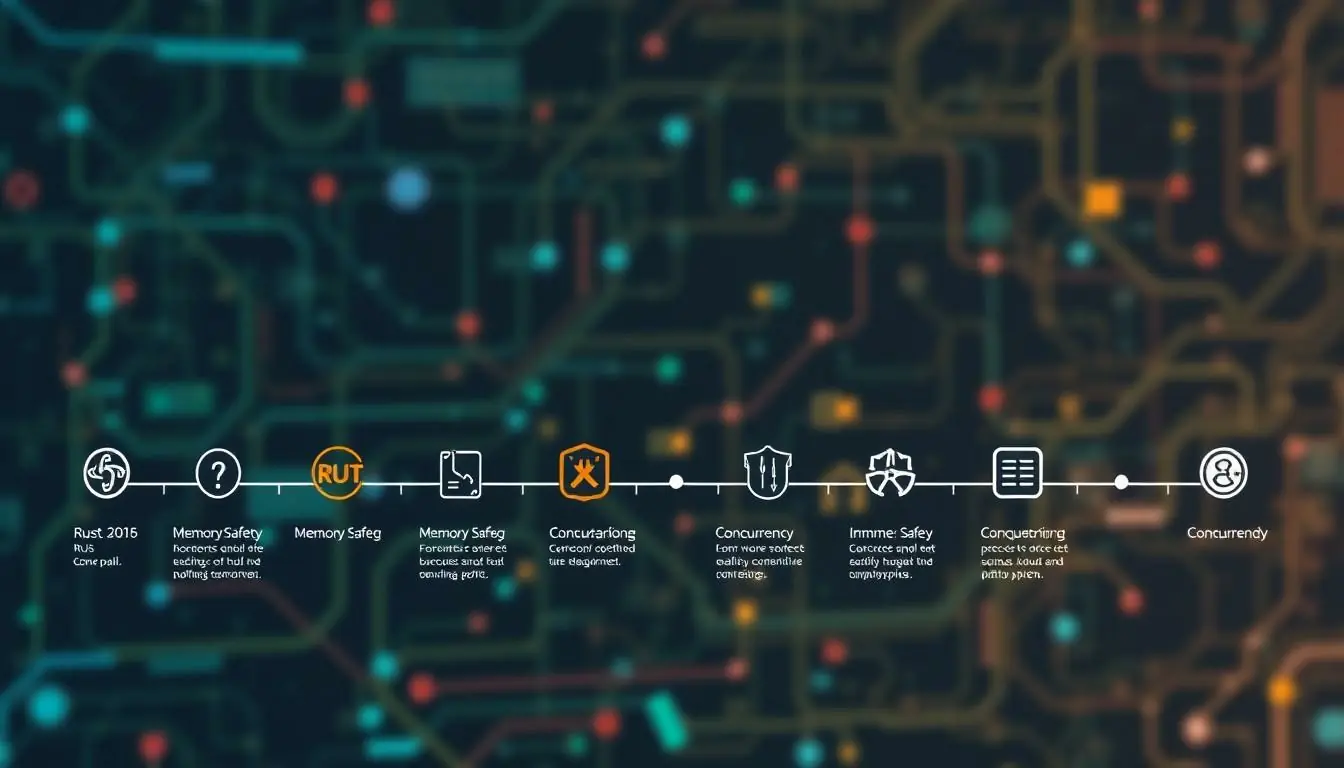Table of Contents
ToggleGamers everywhere are on the edge of their seats, wondering when the much-anticipated release of Rust will finally hit the shelves. It’s like waiting for a pizza delivery that’s taking way too long—your stomach’s rumbling, and you just can’t help but check the tracking app every five minutes.
Rust promises an immersive experience filled with survival challenges that’ll have players crafting, building, and maybe even crying over their lost loot. With its unique blend of chaos and creativity, it’s no wonder fans are itching to dive into this gritty world. So, when can they finally start their journey into the wild? Let’s unravel the mystery behind the release date and what players can expect when Rust finally makes its grand entrance.
Overview of Rust’s Development
Rust’s development began in 2010, initiated by programmer Graydon Hoare at Mozilla Research. The language was designed to focus on safety, speed, and concurrency. It gained traction in 2015 when it reached version 1.0, marking its first stable release. This version established a strong foundation and attracted a dedicated community of developers.
Numerous features highlight Rust’s capabilities. Borrowing and ownership concepts minimize memory-related issues, allowing developers to write safer code. While working with concurrency, it provides effective performance without encountering data races. Ongoing contributions from its open-source community fuel continuous improvements.
The language’s growth is measurable through community adoption and its utility across various domains. As of October 2023, over 1.1 million developers have embraced Rust, making it a top choice for systems programming and web development. Various companies, including Microsoft and Amazon, utilize Rust to enhance their software infrastructure.
Upcoming versions promise additional enhancements. Updates typically occur every six weeks, introducing new features and optimizations. Additionally, the Rust team prioritizes user feedback, ensuring the language evolves to meet developers’ needs.
In recent discussions, topics like embedded programming and WebAssembly support have captured attention. These features reflect demand for Rust’s application in diverse environments. The development roadmap indicates a focus on performance and usability, ensuring Rust remains competitive within modern programming paradigms.
Key Milestones in Rust’s Timeline
Rust’s development journey reflects its commitment to innovation and meeting developer needs. Several milestones mark its evolution, highlighting important dates and features.
Initial Release Dates
Rust’s initial stable release occurred in May 2015, establishing it as a serious contender in programming languages. Prior to stability, versions released in 2010 and 2012 laid the groundwork. These iterations set the stage for the language’s growth, offering evolving functionality and improved safety measures. Developers quickly recognized the potential, contributing to its momentum.
Major Updates and Features
Major updates have consistently enhanced Rust’s capabilities, with version 1.0 introducing critical features. Borrowing and ownership concepts emerged, significantly improving memory safety. Subsequent releases expanded support for concurrency, error handling, and tooling. Highlights include the async/await feature in version 1.39, which transformed asynchronous programming. Each version received feedback from a thriving community, ensuring improvements aligned with user needs. This development cycle emphasizes Rust’s adaptability and commitment to performance.
Community Expectations for Rust
Anticipation for Rust’s upcoming release remains high among developers and gamers alike. Excitement centers around the language’s potential to expand capabilities in programming.
Feedback from Developers
Developers frequently express their enthusiasm for Rust’s unique features. Borrowing and ownership concepts address memory issues, leading to safer code. Regular updates based on user feedback further strengthen the language’s reputation. Innovation remains a priority, as seen from consistent incorporation of suggestions from the programming community. Participation in the Rust community proves vital, helping shape the language’s future direction and ensuring it meets the evolving needs of users.
Discussions on Social Platforms
Conversations on social media platforms reflect a mix of anticipation and curiosity about its release. Users often discuss strategies for utilizing Rust’s capabilities in both systems programming and web development. The community actively shares insights, fostering a collaborative environment that encourages knowledge exchange. Many express eagerness for new updates, specifically regarding embedded programming and WebAssembly support, showcasing the growing interest in versatile application. Engaging dialogue fosters connections and builds excitement as the release progresses, keeping the community informed and involved.
Potential Release Dates
Speculation around Rust’s release dates generates significant interest within the developer community. Many experts believe that upcoming iterations could debut by late 2024, particularly since development trends focus on consistent improvements. Predictions often cite Rust’s commitment to regular updates based on user feedback, suggesting a proactive approach to meeting community expectations. Various sources, including industry analysts, hint at enhancements that align with current programming trends, which could further shape timelines.
Official announcements from the Rust team highlight a systematic and iterative approach to development. The most recent update confirmed plans for a new version, slated for release in early 2024, with discussions on features already in progress. These statements underline Rust’s dedication to quality and stability, reinforcing developer confidence in its upcoming releases. The community eagerly anticipates the integration of advanced capabilities, ensuring that updates remain relevant and valuable as programming needs evolve.
Conclusion
The anticipation surrounding Rust’s upcoming releases reflects its growing significance in the programming landscape. With its commitment to safety and performance, Rust continues to attract a dedicated community of developers. As the language evolves through regular updates and community feedback, users can look forward to enhancements that address their needs.
The excitement for new features and improvements is palpable, especially with predictions pointing to significant updates in early 2024. As Rust solidifies its place in systems programming and web development, the future looks bright for both seasoned programmers and newcomers alike. The journey of Rust is just beginning, and its impact on the tech world is set to unfold in remarkable ways.



